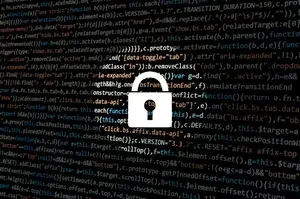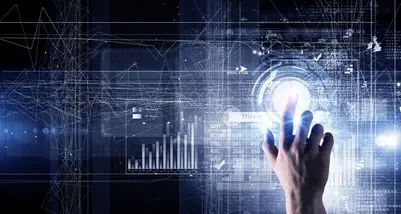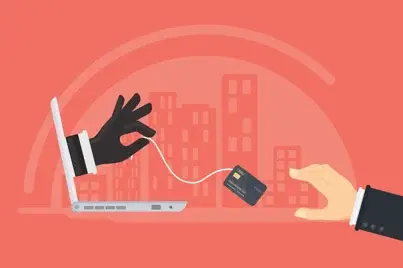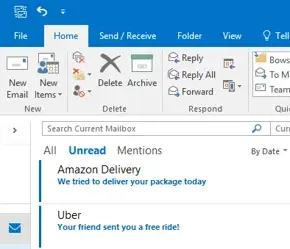

Passwords are only as useful as they are effective. To make them effective, a few best practices boost your passwords and improve cybersecurity across the Omaha organization:
Password hygiene is the group of practices that make your passwords secure and keep them that way. These ideas include making your password longer and more complex. Many systems allow for eight-character passwords, but each character you add to the length of the password exponentially increases its strength.
Using a mix of letters and other characters also improves your password. Even better, using random characters in a long password makes it virtually impossible to guess.
Beyond that, password hygiene includes uniqueness. Avoid reusing passwords, and make sure every account does have an active password. Naturally, avoid sharing them too.
If you want to see in-depth explanations for all of these tips, follow the link below.
Multi-factor authentication is a practice that requires you to put in your username and password and then use another verification method before you can sign into an account. If you have ever tried to sign in where you had to put in a pin number from a text message or email, that’s MFA.
MFA dramatically improves account security because a cracked password is no longer enough to gain access to the account. An attacker would also have to penetrate your other layers, and that’s exceedingly difficult.
The challenge with MFA is that the extra steps create a new vulnerability. This shows up in the form of MFA fatigue attacks.
The gist is that attackers bomb the servers with MFA prompts. Those prompts go to a particular user, so they get a flood of texts, emails, or other notifications asking for permission to access the account. The idea is that the user will eventually get tired of the prompts and approve the request to make the attack stop. Once that happens, the attackers gain access.
MFA fatigue is a manageable problem. With a little knowledge, users and security personnel can respond appropriately and prevent these attacks from succeeding.

Businesses of all sizes benefit from utilizing firewalls. These are essential security devices that protect your Omaha network and provide a number of benefits for any business:
Firewalls empower your IT support in Omaha with tools and resources that help them manage and mitigate all kinds of threats to the network and the organization. Whether a business has a single computer doing basic tasks or thousands of users across multiple locations, firewalls provide these same benefits, and they can do it at scale.

Remote work creates opportunities for organizations and employees, but they also introduce new challenges to networking and security. Remote workers often need access to sensitive data, but their devices are outside of the direct control of your Omaha and Lincoln, NE, IT resources.
There are a few technologies and practices that secure remote work, and many of them involve firewalls.
The right firewall for the job depends on how you utilize remote work resources, but the bottom line is that you need the means to identify remote workers and parse them from potential attackers. Firewalls can accomplish this task and keep your Omaha or Lincoln network secure while still enabling remote work.
Determining the right firewall is a matter of examining risks and mitigating them without impeding your remote work intentions. It requires some planning and analysis, but that’s something CoreTech can help you manage.

It gets said a lot, but the truth bears repeating. A majority of successful cyber attacks work by exploiting bad practices from workers inside of a network. As an example, a user might give away their username and password via a phishing email. That compromised account is then used to access the greater network and cause harm.
This is why awareness training is one of the essential pillars of cybersecurity in Omaha and Lincoln.
CoreTech designs and executes training programs for businesses of all sizes. The programs ensure that employees know essential information and understand the role they play in organizational cybersecurity.
These training programs utilize four pillars to make the content easier to understand and put into practice:

Streamlining information helps us make training that maximizes value, but what does that information look like?
We distill the trainings into eight essential categories:

Vulnerability management helps you understand the risks already present in your systems and offers solutions to protect your organization.
The process starts with vulnerability scanning. This method spots malware before it is already present in the system, making it a proactive tool.
CoreTech implements such scanning with something known as a ConnectSecure. This system works with any device in your network and can scan traffic going through the network. It spots new devices when they access the network and looks for signs of malice with each addition.
Combined with the rest of the service, vulnerability scanning elevates your protection.

The dark web refers to the vast array of connected devices that don’t show up on Google searches. This is where the most nefarious online actions occur, and it’s a space where you don’t want to find your own sensitive information.
Dark web scans scour this space to see if your information is in circulation. When you are found, measures are taken to remove your information and restore your security.
What’s the point?
Not all activity on the dark web is bad, but it is where data brokers and malicious actors go to conduct business. If your data is stolen, it will likely be sold on the dark web.
By proactively finding and changing any information that appears on the dark web, you reduce the risk that your organization gets caught up in a data breach.
.webp?width=300&height=192&name=50689831_s%20(1).webp)
As an ancient bit of wisdom suggests, “know your enemy.” In terms of cybersecurity in Omaha and Lincoln, understanding what motivates cyber criminals can help you think about your own risks and how to manage them.
In general, you can break cyber criminal motivations into six categories:
It’s easy to see how these motivations can guide your cybersecurity services in Omaha. Think about what parts of your systems or data could be exploited for financial gain and make them harder to access. Consider the relationships you have with employees or partner businesses and ensure that they know how to behave in a secure way. Treat them fairly, and you can avoid revenge scenarios.
These lines of thinking shape security efforts and allow for more efficiency. After all, a local gas station probably has less to worry about in terms of corporate espionage, but they probably process a lot of credit cards in a day.

Another process that guides cybersecurity focuses on considering the biggest threats first.
These vary by industry and business practices, but five threats show up more often than not:
Any one of these threats can wreak havoc on a business of any size, in any industry. Because of that, they often represent the starting point for any cybersecurity overhaul.
Once the five universal threats are covered, your organization can turn its attention to more specific threats that might not impact other businesses.

When you cover the most universal threats, it’s time to consider your industry. Every industry faces attacks, but the nature and goal of the attacks does shift from one industry to another.
Keep in mind that generic goals like stealing passwords and data apply to all businesses. That said, considering more industry-specific issues adds a layer to your cybersecurity planning.
To keep this from going too long, let’s consider just a few of the most notable industries:
The healthcare industry probably handles more private data per customer (or patient) than any other industry. On top of that, data protection is more heavily regulated in this industry than any other. Because of this, healthcare offices and providers usually prioritize data protection above all else.
Meanwhile government agencies prioritize protecting a different set of confidential information. While many practices would resemble healthcare data security, government agencies are usually trying to protect government secrets more than user data.
On a different note, construction companies often see a rapid flow of cash, which makes them more financially motivated targets.
You can see how the specifics of an industry change risk factors and why that can restructure cybersecurity priorities.

The internet most of us use and understand only represents a small fraction of all online activity. You see, in order to host information on the internet, you have to register devices through formal addresses. These formal registrations make it (somewhat) easy for officials to find you if you do anything wrong. More importantly, it’s how services like Google can list sites for you when you perform a search, but that’s not the focus right now.
This works similarly to a vehicle registration. If your car is involved in a crime, that registration ties you to the problem right away. This sense of accountability does a lot to limit many activities on the internet.
The thing is, you can connect with others digitally without using the registered internet. In fact, the majority of online activity works this way. All of the unregistered online activity in the world is summarized by the term “deep web.” It’s referring to any digital exchange that doesn’t use the formal processes of the registered internet.
Now, the majority of this activity is not malicious or harmful. For instance, most web servers contain elements that do not exist on registration forms. That’s to protect them from outside access. There are countless other harmless things that exist within the deep web.
That said, if someone wants to do illegal or harmful things online, the deep web offers a little more protection against accountability and legal ramifications.
This leads to the concept of the dark web. It generally refers to the portion of the deep web that is used for nefarious activities. Depending on who you ask, these terms are often used interchangeably, and different definitions exist for the dark web especially.
Regardless of the definition, the dark web is where you would most likely find data brokers trying to sell stolen information. That ties it back to cybersecurity.
In order to protect yourself from malicious activity on the dark web, you need to know the essentials.
.webp?width=300&height=300&name=10%20(1).webp)
Of all of the digital risks to modern businesses, ransomware often tops the list. It is amongst many pertinent threats, and it does merit your attention. Ransomware is an attack that installs software on your system that encrypts your data. Because of that encryption, you can no longer access your own data, and for most businesses, that brings everything to a screeching halt. The attackers send a message saying they will unlock your data for a price. That’s bad enough, but in many cases, paying the price does not resolve the problem. Ransomware is a large topic that requires a bit of learning, but there’s an easy place to start. If you face a ransomware attack, you want to take five steps toward resolution:
For the most part, you want your security experts to run the show. Hopefully, preventative measures were already in place to mitigate the issue. Regardless, they can surmise the situation and walk you through the rest of the journey.

.webp?width=400&name=49199628_s%20(1).webp)
Ready to learn more about our managed IT service offerings in the Omaha and Lincoln, NE area? Contact us today!
.jpg?width=555&height=417&name=CoreTech%202023%20(8%20of%2045).jpg)
CoreTech offers a comprehensive suite of cybersecurity resources designed to protect your business from evolving threats. From password best practices and multi-factor authentication to firewall configurations and remote work security, our resources provide actionable insights to bolster your defenses. Whether you're just starting to explore cybersecurity or looking to enhance your existing measures, we're here to guide you every step of the way.
![]() We provide 24/7 IT support, cybersecurity and business phone system management to small and midsize businesses throughout the Omaha, Lincoln, and Council Bluffs metro areas.
We provide 24/7 IT support, cybersecurity and business phone system management to small and midsize businesses throughout the Omaha, Lincoln, and Council Bluffs metro areas.
Receive helpful security alerts, time-saving tips and technology trends directly in your inbox.